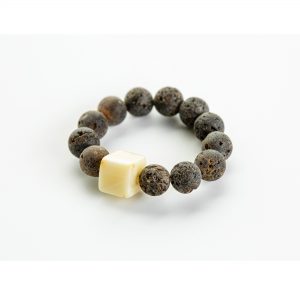Baltic Amber ( lat. Succinum ) is a fossil resin of conifers that thrived in the Eocene, forty to fifty million years ago in Fennoscandia, the region that corresponds to the modern Scandinavian peninsula. Amber has been prized and used extensively over the entire Mediterranean since the Neolithic period.
Amber has been fished and mined in the Baltic Sea region since prehistoric times. The discovery of amber-related goods is consistent with its natural occurrence in Europe along the South-Eastern Baltic beaches from Jutland to the Gulf of Finland.
For a very long time, Baltic Amber has been intriguing to people. Human figures made of Amber and shaped into miniature idols and pendants in the form of animals have been discovered in coastal cemetery sites from the late Neolithic Period. Amber acquired mystical aspects when people realised certain characteristics of it.
There have been discovered Amber discs with patterns that have had a religious significance, which demonstrates that the Baltic people were sun worshipers.
Additionally, the discovery of the Amber phallic-shaped axes suggests that Baltic Amber has long served as a symbol.
Since the late Iron Age, the long-distance exchange has contributed to the material’s acknowledged significant role.
Amber was used to make cult artifacts by the Neolithic Baltic tribes that lived on our Eastern Baltic shores. The sun’s wheel symbolism was drilled through the human figurine and pendants, which were each embellished with a cross-shaped design extending out from its central perforation.
Its ability to serve as a dark power amulet was made possible by this trait.
Showing the single result

